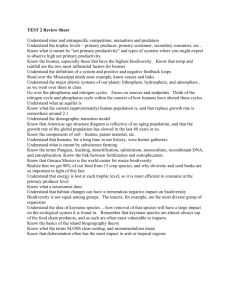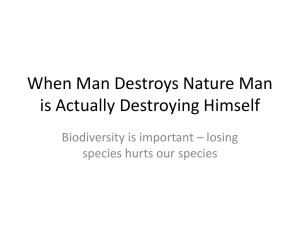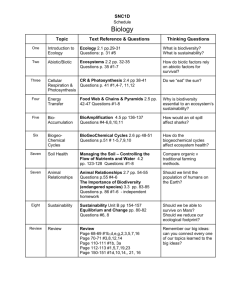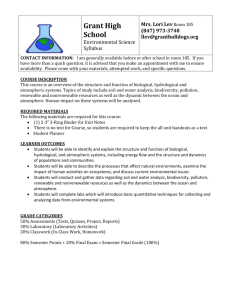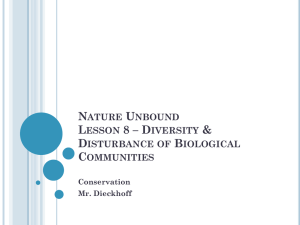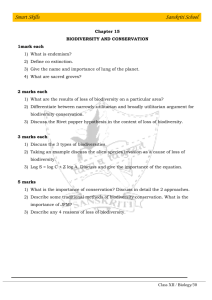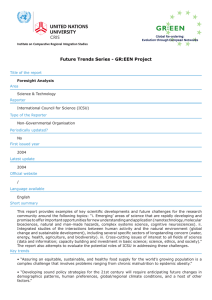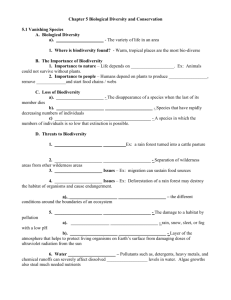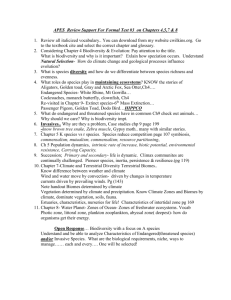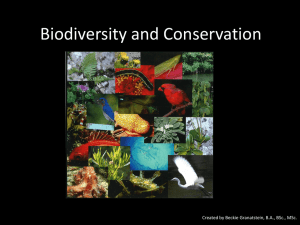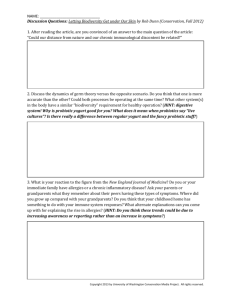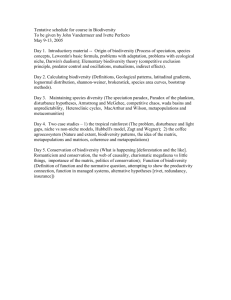Science-Biology-LFS
advertisement
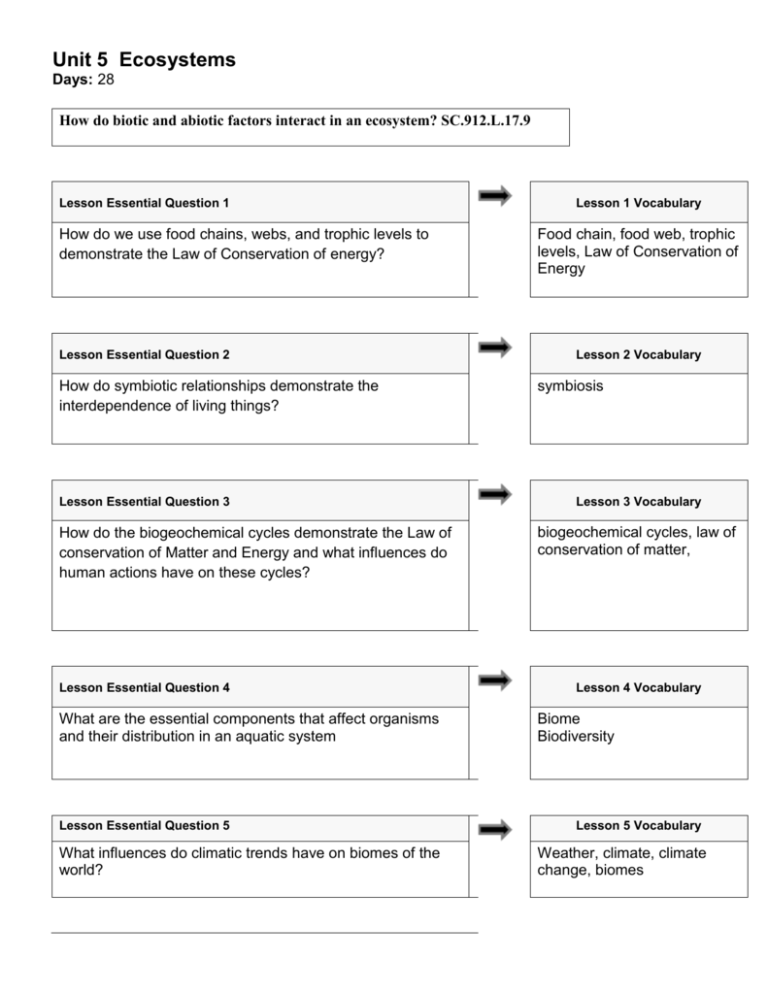
Unit 5 Ecosystems Days: 28 How do biotic and abiotic factors interact in an ecosystem? SC.912.L.17.9 Lesson Essential Question 1 How do we use food chains, webs, and trophic levels to demonstrate the Law of Conservation of energy? Lesson Essential Question 2 How do symbiotic relationships demonstrate the interdependence of living things? Lesson Essential Question 3 How do the biogeochemical cycles demonstrate the Law of conservation of Matter and Energy and what influences do human actions have on these cycles? Lesson Essential Question 4 What are the essential components that affect organisms and their distribution in an aquatic system Lesson Essential Question 5 What influences do climatic trends have on biomes of the world? Lesson 1 Vocabulary Food chain, food web, trophic levels, Law of Conservation of Energy Lesson 2 Vocabulary symbiosis Lesson 3 Vocabulary biogeochemical cycles, law of conservation of matter, Lesson 4 Vocabulary Biome Biodiversity Lesson 5 Vocabulary Weather, climate, climate change, biomes Lesson Essential Question 6 Lesson 6 Vocabulary What are the similarities and differences between primary and secondary succession? Primary and secondary succession Lesson Essential Question 7 Lesson 7 Vocabulary How do multiple limiting factors interact to determine population size? Populations, limiting factors, carrying capacity Lesson Essential Question 8 What are the major causes and effects of the loss of biodiversity? Lesson Essential Question 9 Lesson 8 Vocabulary biodiversity Lesson 9 Vocabulary How does the use of renewable and nonrenewable resources impact biodiversity? renewable, nonrenewable resources Lesson Essential Question 10 Lesson 10 Vocabulary How do Human activities impact environmental systems? deforestation Lesson Essential Question 11 Lesson 11 Vocabulary How is adequate monitoring of environmental parameters useful in making policy decisions? parameters Major Unit Assignment Students will demonstrate their understanding of the nature of science by completing the steps of a scientific experiment. Students will use the Sumter County Schools Experimental Design to answer a question or solve a problem with a clear purpose for investigation. 1. 2. 3. 4. 5. 6. 7. 8. 9. 10. Identify a question or problem. Explain the purpose of investigating this question or problem. Conduct background research on the topic, listing your findings in a bibliography. Develop a testable hypothesis in an “If, then, because” statement. Create a specific bulleted list of materials needed for the experiment. Write out detailed procedures for how to do the experiment and how to analyze the data. Include any safety concerns. Records all observations and data from the experiment in charts, graphs or tables. Evaluate the results of the experiment. Construct an argument using the evidence to explain if the results support or do not support the hypothesis and write a conclusion statement. Share the project in the school science fair or in the class.
